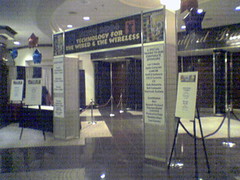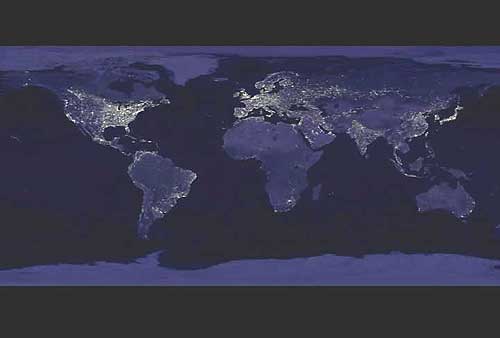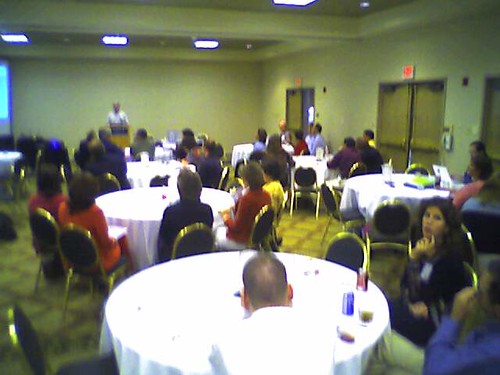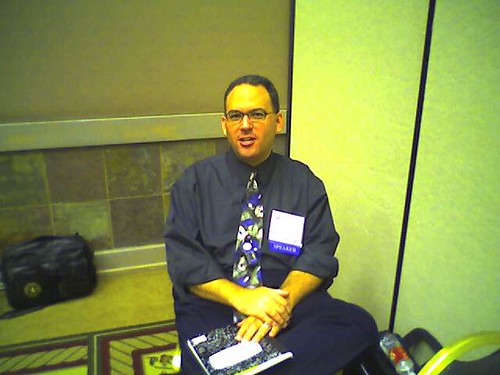 While working on the NCETC blogger page, I was listening to some ITConversation podcasts, and happened upon one that I almost didn’t listen to. When I see a name like Vinod Khosla, I assume that the topic is going to be WAY over my head. Today, I decided to listen. Actually, I was only half listening, since I was coding web pages at the time. But my attention kept drifting back to the speaker, because this venture capitalist and founding CEO of Sun Microsystems, kept coming back to his children and to education.
While working on the NCETC blogger page, I was listening to some ITConversation podcasts, and happened upon one that I almost didn’t listen to. When I see a name like Vinod Khosla, I assume that the topic is going to be WAY over my head. Today, I decided to listen. Actually, I was only half listening, since I was coding web pages at the time. But my attention kept drifting back to the speaker, because this venture capitalist and founding CEO of Sun Microsystems, kept coming back to his children and to education.
What initially struck me was when he said that to his children…
Everything is Clickable, even their parents.
Ok, this is important! Is this important? What does this mean? Ok! OK! My son has moved his base of operations from the TV room, where he regularly played with his X-box, to his bedroom, where he sits in a dilapidated office chair (inherited from my office), at a dilapidated G4 laptop (also inherited from my office), a digital video camera he bought himself, a Game Cube connected to a 13 inch TV, still camera, analog converter, etc. So what does it mean to him that everything is clickable? Well, it means that from his chair, he has access to content (Google), his friends far and wide (iChat), video games, cable TV, VCR, and DVD. What’s even more interesting is that with his still and digital cameras, he spends time mixing content together, recently recording himself miming the opening scene of Music Man, playing all 8 of the characters by editing himself in and out wearing different hats. It’s hilarious and impressive, and he does it by clicking!
What would it mean for a teacher to be clickable. First of all, students click on resources. They have a question that they want to answer or an experience that they want to enjoy, and they click into a resource of digital networked information. It isn’t enough, though, to model teachers as a resource, though it is a comfortable model for most. The difference is that in most teachers vision of themselves as resources of knowledge, they exercise control over its delivery. When students click their resources, they expect to have control.
So I think that we have to repurpose teachers slightly, in order to continue this metaphor of clicked-on teaching. How do we provide our knowledge in a meaningful way, while allowing students to have control? I’m reminded of what John Beck says, when talking about his book, Got Game, how for gamers, the word boss brings up images of a level boss, an especially large monster (barrier) that the must get past in order to move to the next level (see Letting Go). Beck says that we need to try to become the student’s strategy guide, the books that they buy with the short cuts they need to get to where they want to go.
The task of the teacher then becomes a layered affair (as if there aren’t enough layers already). First of all, the teacher has to create and persuasively describe the place that the students will want to go, a student-centered outcome that is compelling to young learners. Then the teacher must construct a context within which the students will work with relevant/authentic limitations, and appropriate tools to accomplish the goal. Finally, the teacher becomes a consultant, or strategy guide. Students need information and/or skills to accomplish the goal. The teacher provides them on demand and within the authentic context, or becomes a compass, helping students to discover on their own the information that they need, or the skills they must gain. It isn’t a pretty classroom, but students are learning by working the curriculum, not simply absorbing it.
The podcast interviewer, John Battelle, continues,
Given the access to all the knowledge…that’s out there in the search world, what does the education system need to do differently to deal with that change context?
Khosla responds,
The worlds a different place. Use to be that my kids would have to learn about the Hopi Indians in school. I was meeting with my children’s principal, discussing this subject, and I pulled out my Treo and got 436,000 search results on Hopi Indians. There is no long a need to teach kids the facts about the Hopi Indians. But there is a desperate need to teach them how to think critically about what to believe — how to sort through information. So, critical thinking is one example of something that needs much more priority.
Few readers of this blog will disagree with this. But Vinod continues,
Wikipedia is great. but why can’t we use the same model to make every textbook in the world open source and free. (Applause)
He itemizes price, the ability to have multiple levels of content, and the dynamic nature of the content as reasons. I thought back to my days at the NC Department of Public Instruction and how the curriculum consultants there could easily write open source textbooks for the children of North Carolina, aligned to NC standards, and then put them into the hands of teachers and students and watch them grow. But that got shot when Vinod stated the obvious,
It’s hard to change the education system, in my view, from the top-down. Can we allocate another few more percent, three or four percent, of the GDP to education? Yes we can, but it’s going to be very hard through the political process. Like all things, if we start at the bottom, start attacking it at its root in small, creative, innovative ways that are scalable, then we’ll see a much bigger affect.
So what does that look like? How do you quantify and qualify it? How do you share it? These were my initial questions, and they are old questions. But then my world got rocked again, when Jeff Jarvis (BuzzMachine), from the audience asked,
In five years or ten years Where is most the value going to be in what we now call media? Is it going to be in the top-down still (content distribution), or or in the bottom-up (trust and relationship)?
Khosla replies,
I can’t see that far. But one thing that I can say, is that
I suspect it is going to be in the company or companies that can grow and maintain audiences. Content today is the dominant thing. I think we will start to see people who can aggregate audiences in interesting ways.
Woooow! Ok, so it isn’t the textbook? It’s the audience? The class? What is the power of the audience? What is the power of the class? How might we turn the class audience into an engine for learning? What does it look like? Is this where we need to be thinking, in order to drive a bottom-up revolution in education?
What do you think?
Khosla, Vinod. “Vinod Khosla In Conversations with John Battelle.” ITConversations. San Francisco: RDS Strategies, LLC, 7 Oct 2005.



 While working on the NCETC blogger page, I was listening to some ITConversation podcasts, and happened upon one that I almost didn’t listen to. When I see a name like Vinod Khosla, I assume that the topic is going to be WAY over my head. Today, I decided to
While working on the NCETC blogger page, I was listening to some ITConversation podcasts, and happened upon one that I almost didn’t listen to. When I see a name like Vinod Khosla, I assume that the topic is going to be WAY over my head. Today, I decided to 

 Hall just showed a very powerful video clip of a cave drawing. But, thanks to animation, one of the horses, peals off the wall, and starts to run away. The end is sad, but the message is, how we express our selves has advanced madly.
Hall just showed a very powerful video clip of a cave drawing. But, thanks to animation, one of the horses, peals off the wall, and starts to run away. The end is sad, but the message is, how we express our selves has advanced madly.
